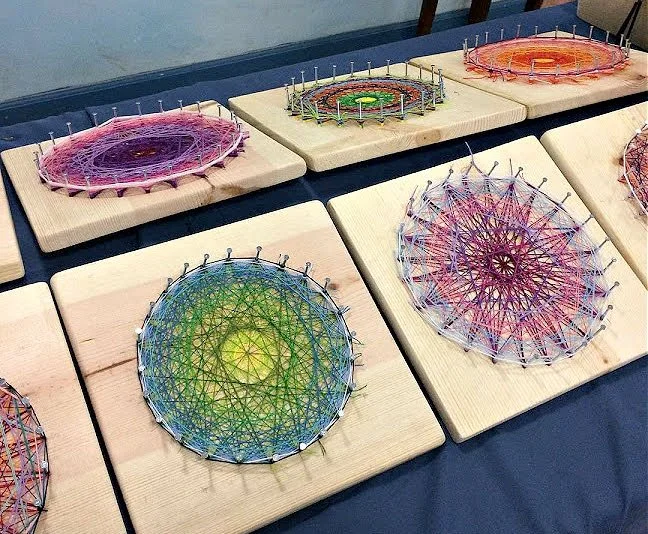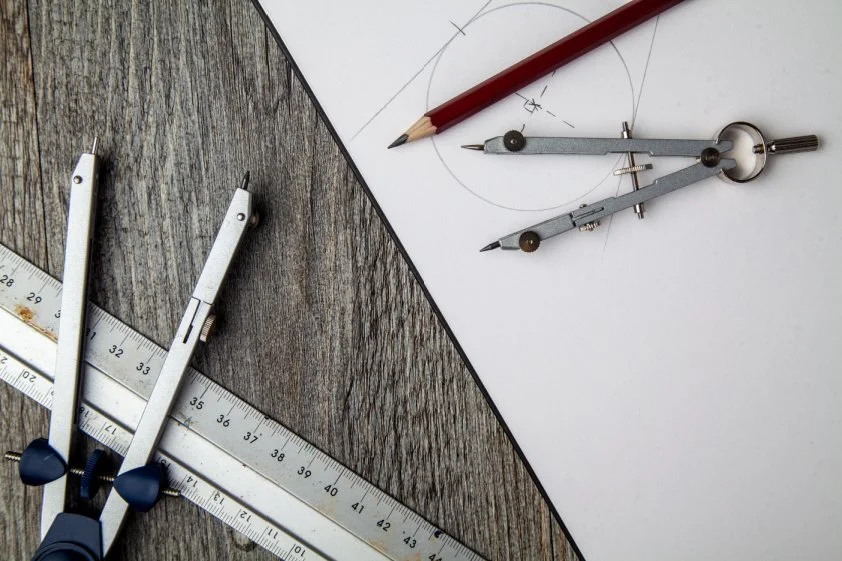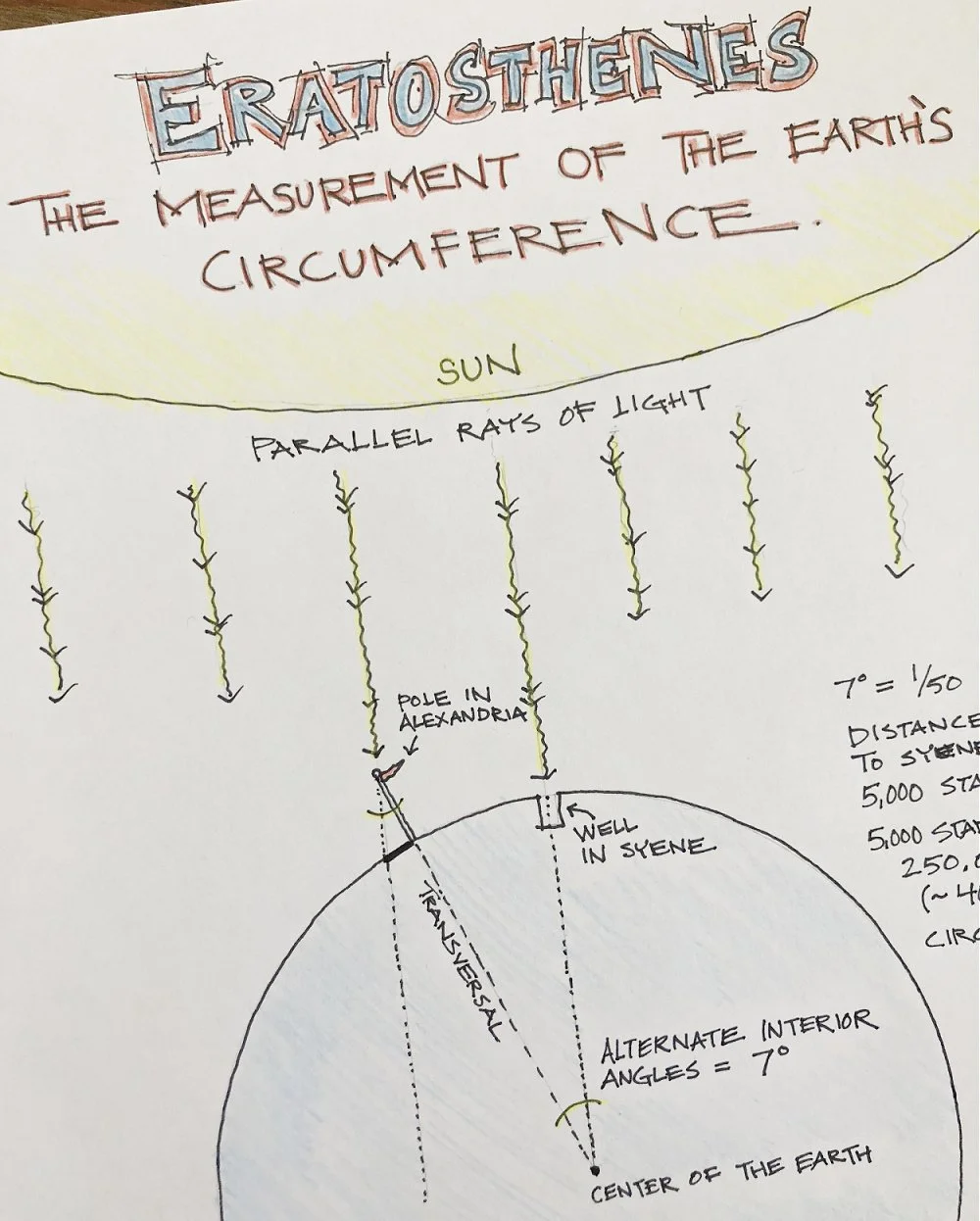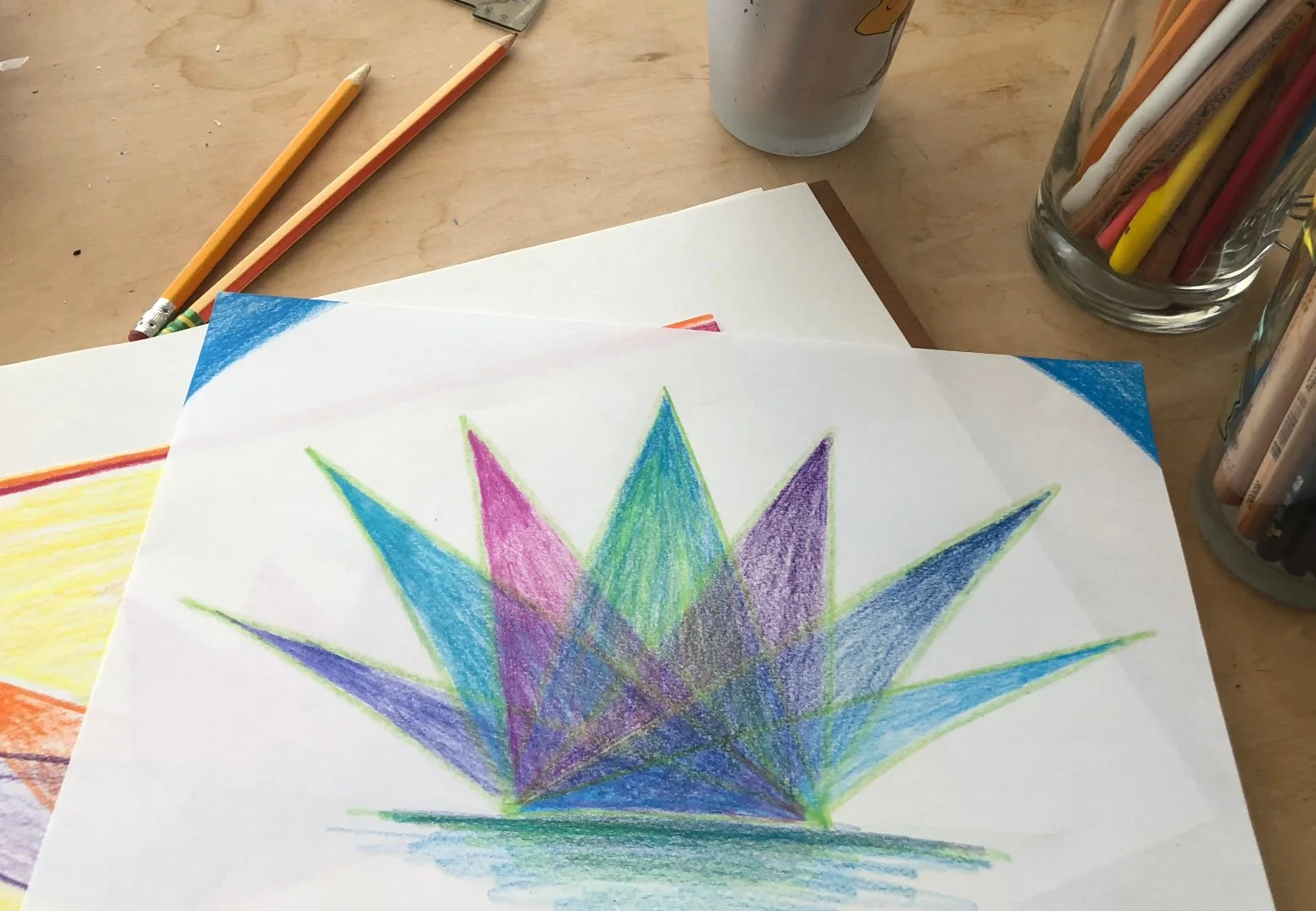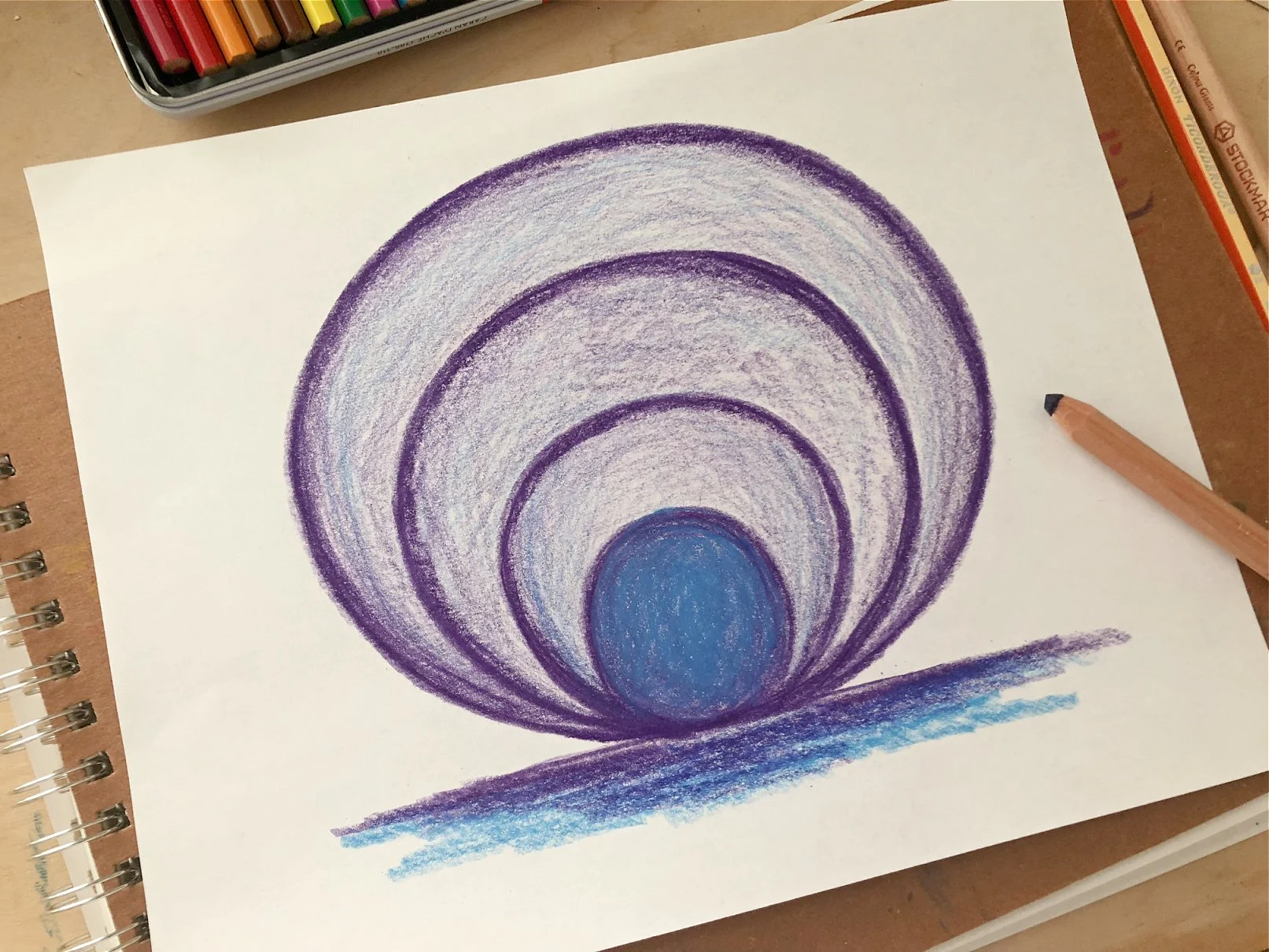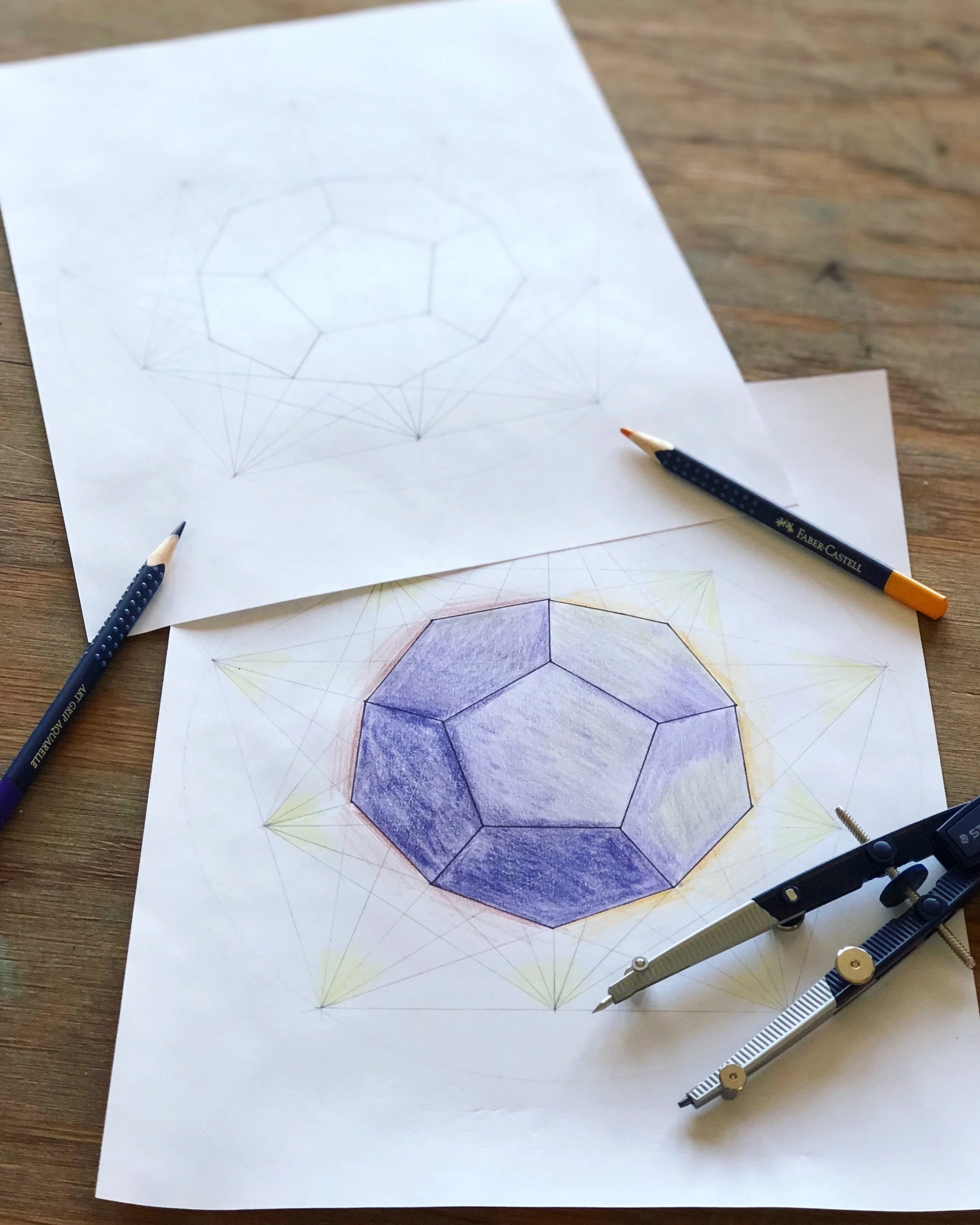Waldorf Geometry: How it Meets the Sixth Grader
A running theme of the sixth grade Waldorf curriculum is the phrase “cause and effect.”
A twelve pointed circle becomes something beautiful with some color and shading!
Students at this age are ready to experience and observe more on their own than ever before, which is why we introduce the formal study of science, history, and more (and if you’re interested in learning more about the middle grades science, click here!)
My favorite subject to teach in sixth grade is geometry (not a big surprise to you, I’m sure!) It’s a block I look forward to, and deeply love, and not just because it speaks to me personally, but because I truly enjoy watching the transformation the materials create space for within the young middle schoolers.
The students have experienced geometry in fifth grade, so the subject isn’t completely new to them. They are familiar with the vocabulary, and have discovered and experienced the balance, symmetry, and beauty that freehand geometry provides.
In sixth grade, the geometry block brings a new experience for the student, and it's one that doesn’t always get the credit it deserves! But in my experience, it is perhaps the most important and developmentally appropriate block of sixth grade: it is all about cause and effect, the beauty of order, and the laws of nature.
So, how does the geometry curriculum reinforce the sixth grade theme of “cause and effect”?
If we’re constructing a six pointed form, the compass point must lay on the intended point as perfectly as possible. If it’s a little off, then the whole form will be a little unbalanced.
If we are constructing parallel lines and don’t use our straightedge accurately, then we simply won’t end up with parallel lines when we are done.
If we construct six equidistant points on a circle’s circumference, and connect them one by one with straight lines, then we’ll create a hexagon.
We include a string form lesson in our sixth grade geometry course!
Notice the “if….then…” wording?
If this, then that.
Rule, order, and natural consequences that exist without opinion or judgement- kind of perfect for a sixth grader, who probably feels judged often, unsure of where they stand in the world, and feels change all around them and in their physical body.
Truly feeling the reality of cause and effect, as well as the challenges and satisfaction that come with the experience of using tools and constructing complex forms, is deeply important for the student.
So what then is the significance of the next step, which is shading and using color to finish the final form?
This second step of using color and shading techniques, is a critical piece for the student to experience to truly get the benefits that this block provides. Now is the time to give them choice - what colors will they use? Bright, soft, bold, dark? Will the form be darker on the outer edges and get lighter as it moves in?
The choices are endless. When my students came to the point that a final form was ready to be finished with color, it never failed that the room would become quieter, students would arrange their pencils in possible color combinations, and careful, intentional work would begin. Beauty would begin to bloom around the classroom!
Student work displayed from a sixth grade classroom- every form and drawing is unique and beautiful!
Within the laws of nature, there is space for the beauty of the individual.
Isn’t that amazing, and so important for an-almost-teenager to experience?
For a sixth grader (or perhaps everyone?) it is important to hear and experience the comfort and structure that comes with knowing the laws of nature. We can count on these truths, and know that they will not waver, no matter how chaotic the world may seem. And within these laws, there is space for one to create beauty, and express their individuality in important and impactful ways.
I know these are big and lofty things to say about just one 3 or 4 week block, but I don’t say them lightly!
Geometry really is that powerful, meaningful, and just plain amazing.
Bring your homeschool curriculum to the place where art meets math! Our courses for grades 5-8 provide a full year’s worth of curriculum, instructor support, step-by-step instructions, and so much more.
About the Author
Caitlin Amajor taught in the Waldorf middle school for seven years, and was also a Waldorf student herself! She currently works as an administrative assistant for Waldorfish, and is also the instructor for the grades 5 and 6 geometry courses. Caitlin enjoys baking, gardening, and spending time with friends and family.

